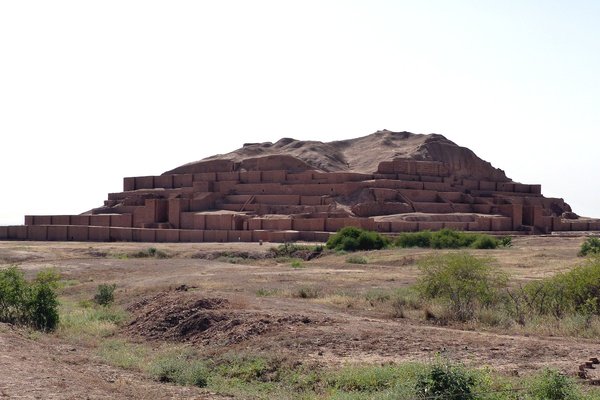Iran
Tchogha Zanbil
Tchogha Zanbil comprises the ruins of the holy city of the Kingdom of Elam, centered on a great ziggurat and surrounded by three huge concentric walls.
Its ziggurat is considered to be the best-preserved example in the world and it is one of the few extant ziggurats outside of Mesopotamia. The complex that dates from the middle Elamite period (1400-1100 BCE) further consists of temples, royal palaces, royal tombs and a necropolis.
Community Perspective: The ziggurat is impressive, albeit heavily reconstructed – Solivagant’s review has more on its conservation history. In 1999, Iain was still allowed to climb all over it.
Site Info
Official Information
- Full Name
- Tchogha Zanbil (ID: 113)
- Country
- Iran
- Status
-
Inscribed 1979
Site history
History of Tchogha Zanbil
- 1979: Inscribed
- Inscribed
- Type
- Cultural
- Criteria
- iii
- iv
Links
- UNESCO
- whc.unesco.org
- Official
-
- visitiran.ir — Visit Iran
- Related
-
- livius.org — Dur Untaš (Choga Zanbil) - by Livius, Articles on Ancient History
- chz.ir — Chogha Zanbil Travel Guide and Tours
- en.wikipedia.org — Wiki on Tchogha Zanbil
All Links
UNESCO.org
- whc.unesco.org — whc.unesco.org/
Official Website
- visitiran.ir — Visit Iran
Related Resources
- livius.org — Dur Untaš (Choga Zanbil) - by Livius, Articles on Ancient History
- chz.ir — Chogha Zanbil Travel Guide and Tours
- en.wikipedia.org — Wiki on Tchogha Zanbil
News Article
- Oct. 21, 2009 presstv.ir — Iranian cultural officials have planned to renovate an ancient Elamite tomb at Tchogha Zanbil in a bid to introduce the traditional royal burial ritual in the country
- Oct. 1, 2008 iranmania.com — An archeological team made up of Iranian and Italian experts started excavations at Iran's Chogha Zanbil
Community Information
- Community Category
- Archaeological site: Near Eastern
Travel Information
Red Zone Travel Advisory
Iran fully off-limits
Shush Hotspot
Recent Connections
-
Curse Inscriptions
The bricks at the ancient Elamite ziggu…
-
No Map
-
Red Zone Travel Advisory
Iran fully off-limits
Connections of Tchogha Zanbil
- Trivia
-
-
Discovered from the Air
"It was sighted in 1935 by prospectors of the Anglo Iranian Oil Company who were surveying the region by airplane" -
In the Louvre
Stele representing King Untash Napirisha, "King of Anzan and Susa". This stele with four registers was commissioned by the Elamite king Untash-Napirisha for the city of Chogha Zanbil. It was later moved to Susa by one of his successors,
-
- History
-
-
Iron Age
Iranian Iron Age, ca. 1250 BC
-
- World Heritage Process
-
-
No Map
-
Perfect Inscriptions
1979 -
First inscriptions
Iran: three inscriptions in 1979, with Tchogha Zanbil as the first and the records and with the lowest number
-
- Religion and Belief
-
-
Curse Inscriptions
The bricks at the ancient Elamite ziggurat of Chogha Zanbil contain cuneiform inscriptions with a curse against anyone who damages the temple or removes its materials. The inscriptions were made by the Elamite King Untash-Napirisha (also known as Untash-Gal), who built the ziggurat in the 13th century BCE. The inscription warns against any destruction or appropriation of the temple. While the full, precise text is quite long and complex, the essence of the curse is a solemn warning and an appeal to the gods.
-
- Human Activity
-
-
Petrosomatoglyphs
There is apparently a 3,000 year old footprint of a child at the foot of the Ziggurat. -
Language isolate
Elamite (sometimes connected to the Dravidian languages of south India)See en.wikipedia.org
-
Cremation
"A building on the grounds contains five vaulted underground tombs, within four of which are cremated remains, and there is one uncremated corpse. The Elamites traditionally buried their dead, and the reason for the cremation is unknown."
-
- Constructions
-
-
Ziggurat
See en.wikipedia.org
-
Tombs
Five subterranean royal tombs -
Unfinished constructions
The whole city remained unfinished after it was invaded by Ashurbanipal in 640 BC, as shown by the thousands of unused bricks left at the site. It was unlikely that many people ever lived there. -
Necropolises
-
- Timeline
-
-
Built in the 2nd Millennium BC
ca. 1250 BC
-
- WHS Hotspots
-
-
Shush Hotspot
50km
-
- Visiting conditions
-
-
Red Zone Travel Advisory
Iran fully off-limits
-
News
- presstv.ir 10/21/2009
- Iranian cultural officials have pl…
- iranmania.com 10/01/2008
- An archeological team made up of I…
Recent Visitors
Visitors of Tchogha Zanbil
- Afshin Iranpour
- Alexander Barabanov
- Alexander Parsons
- Ask Gudmundsen
- Atila Ege
- Bernard Joseph Esposo Guerrero
- David Marton
- Erik Jelinek
- Fan Yibo
- fedemarch92
- George Gdanski
- Harry Mitsidis
- Iain Jackson
- Ivan Rucek
- Jean Lecaillon
- Joyce van Soest
- Ken DJ
- Loic Pedras
- Maciej Gil
- Martin
- Martina Rúčková
- MaYumin
- Miloš Tašković
- Nihal Ege
- Roman Bruehwiler
- Solivagant
- Stanislaw Warwas
- Szucs Tamas
- Taotao Chen
- Thomas Buechler
- Wojciech Fedoruk
- Zoë Sheng
Community Reviews
Show full reviews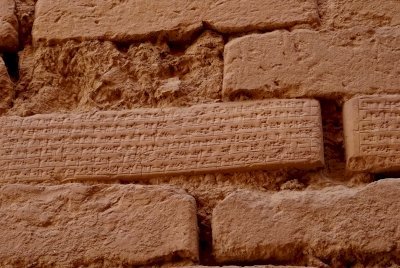
Tchoga Zanbil is a nice and interesting pyramid but in my taste not so wonderful. I guess it depends on the people, one of my friend found it memorable, one of the best place in Iran ; it's not my own opinion.
The real positive point for me is that is the only heritage of the Kingdom of Elam. What is rare is precious.
This site just looks like a big "ziggurat" (pile) of bricks more or less recently arranged. It is, but some of these bricks are carved of an ancient writing, probably restored.
To conclude, it's a very interesting place which deserves its inscription, but I make express reservations due to a kind of non-authentic place.
Keep reading 0 comments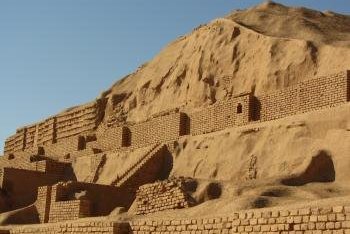
I visited Tchogha Zanbil (as well as the other nearby WHS) on a long day trip from Ahwaz, between two overnight bus trips. This is not a recommended way to see these sites, as you can find yourself at the whims of an unpleasant driver who decides to double the price of the trip halfway through.
While I showed this driver (the only one at the station willing to take the trip) my map showing a route of Ahwaz-Susa-Tchoga Zanbil-Shushtar-Ahwaz, he nevertheless insisted on going to the ziggurat first, expressly denying the existence of a clearly-marked road linking them east-west. This caused pointless doubling back, which he repeatedly passive-aggressively blamed on me.
Approaching the ziggurat, I was amused by signs prohibiting the use of firearms. This instruction seemed a lot less comical when I arrived at the site to find nobody else there, with what could only be the sound of automatic gunfire in the middle distance. Combined with what seemed to be angry yelling, the eeriness of this experience soured my visit, as I didn't feel super comfortable being there in such a situation. I'm sure in reality it was perfectly fine, and once back in the car I felt a bit silly for worrying, but I nevertheless couldn't shake an uncomfortable feeling. As such, I didn't really do much more than a quick circumnavigation of the ruins, which is a shame.
Keep reading 0 comments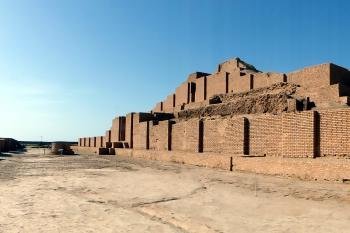
I note that Tchogha Zanbil’s (TZ) only previous review on this site relates to a visit as far back as 1999! So, an update from our visit in Apr 2016 seems worth providing!
The 50kms drive from Susa along minor roads took around 50 minutes (Nb, if, as we were, you are trying to visit all 3 WHS on 1 trip it will take around another 45 minutes to drive the 45 kms on to Shushtar). This included a short stop to look at the ruins of Haft Tepeh which are situated around half way. This is another Elamite archaeological site of temples and a (probable?) ziggurat which pre-dates Tchogha, from a time when the Elamites were disunited - whereas TZ is the product of Elam at its pinnacle. The ruins are by the road side and can be quickly seen “for free” – if you are passing, it is certainly worth such a viewing, if only to add to your “Ziggurat count” (there are said to be only 35 in the World with 28 in Iraq and 5 in Iran – we also visited the ones at Susa and Sialk Tepe but missed the one at Jiroft!). The site has a small museum in a new building (Apparently the previous one was badly damaged during the Iran-Iraq war), which Lonely Planet says is “a good primer for Choqa Zanbil” - but we were short of time and gave it a miss. In fact, the building’s prime role is as …
Keep reading 0 comments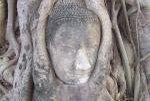
Early one morning in May 1999 I arrived, by overnight bus from Shiraz, in Shush, the town in Southern Iran nearest to Tchoga Zanbil. There it was very easy to find a taxi driver prepared to take me the 40kms or so, through semi-desert though once fertile country, to this site (prices in Iran were very low at the time of my visit).
The heart of this site is an impressive pile, of mud brick construction, said to be the largest surviving ziggurat in the world. Now, more than 3000 years after it was built, having been sacked by the Assyrians in 640BC and having spent most of the time since then buried in the desert sands it stands about 25m high. It has, however, been calculated that it was once more than twice this height having lost 2 of its 5 storeys over the years.
Some visitors might feel that some of the restoration has been a bit over enthusiastic, with large areas of obviously new brickwork on the lower parts of the structure, a process which was being continued, at a fairly gentle pace, when I was there.
I was surprised to find that I was allowed to climb all over the Ziggurat which stands on a low plinth measuring 105m on each side. There are the remains of a number of other structures including a large surrounding wall and others which were once royal palaces. I was particularly impressed by a water supply and drainage system which …
Keep reading 0 comments
